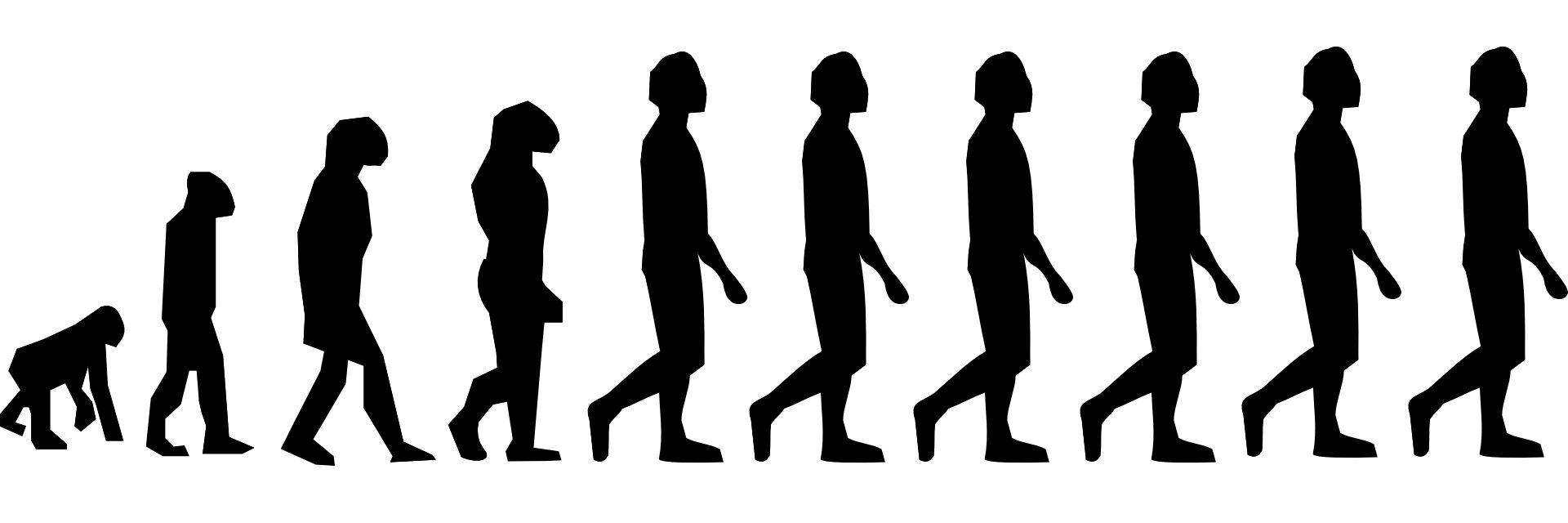The idea that life is inherently a struggle for survival is the revolutionary contribution of two remarkable minds, one we know well. The other? Not so much.
◊
Held fast in fever’s grip, wracked by terrible chills, hellish sweats, and aches that made him feel as if being drawn and quartered, the young man dipped in and out of lucidity. Why, oh why had he agreed to this voyage, attacked as relentlessly as he was by this terrible disease? His only consolation was one idea that emerged from it all, but what an inspired idea it was! After puzzling over how and why life evolves, it suddenly occurred to him: natural selection.
This is a little-known anecdote from Charles Darwin’s momentous journey to the Galapagos Islands, right? Wrong! The story is actually a dressed-up account of how Alfred Russel Wallace, Darwin’s junior by 14 years, arrived at his own breakthrough in evolutionary theory. So, while Charles Darwin is considered the father of evolutionary theory, he’s not the only one to argue that life is a matter of natural selection.
In 1858, Wallace wrote to Darwin, who he knew was working on an account of the origins of species. Shortly thereafter, the two sent a joint presentation of the theory of natural selection to be read at the Linnean Society of London on July 1, 1858. The presentation consisted of a paper by Wallace and excerpts from Darwin’s work-in-progress. A year later, Darwin’s landmark work, On the Origins of Species was published; in it were several references to Wallace’s work. (Wallace was no slouch himself. His extensive travels resulted in The Malay Archipelago [1869], which chronicled his second expedition. A polymath, Wallace wrote voluminously on a range of subjects, including spiritualism.)
Check out The Voyage Of Darwin's Beagle: On The Future Of Species on MagellanTV.
Evolution’s Mechanisms of Change
Darwin and Wallace’s presentation was the first clear statement of what we now know as evolutionary biology, which studies the mechanisms of natural selection, or how organisms evolve. Evolution is the term for the long-term changes of an organism through successive generations. Two ideas are important to bear in mind: One is that change happens – we now know that birds evolved from dinosaurs. The other is that the process of change is gradual. Sluggishly gradual – it took tens of millions of years for birds as we know them to arrive on the scene.
But suppose you are a theist. How do you square the concept of evolution with, say, a belief in divine creation and purpose? In the Abrahamic traditions’ account, for example, Adam is the first human, created fully formed, as complete as Athena sprung from Zeus’s head. It’s not particularly conducive to the idea that humans (and our fellow primates) descended from a now-extinct species of ape.
Natural selection implied a sort of downgrading, decentralizing, or marginalizing not only of us humans, but God Almighty. After all, if human development is a matter of chance, you and I are effectively accidents – not the special creatures we’ve smugly supposed ourselves to be. And if the inexorable march of life is a struggle for survival, unguided and without purpose, how could we have been created in God’s image? Indeed, as philosopher (and Darwin enthusiast) Daniel Dennett has it, Darwin’s idea was dangerous.
It was also revolutionary. Oddly enough, however, it changed nothing. As Dennett points out, from a practical point of view, things still felt very much the same. The Sun still rose in the east and set in the west. People still fell in and out of love. The dog still barked at strangers. Grapes still ripened on the vine.
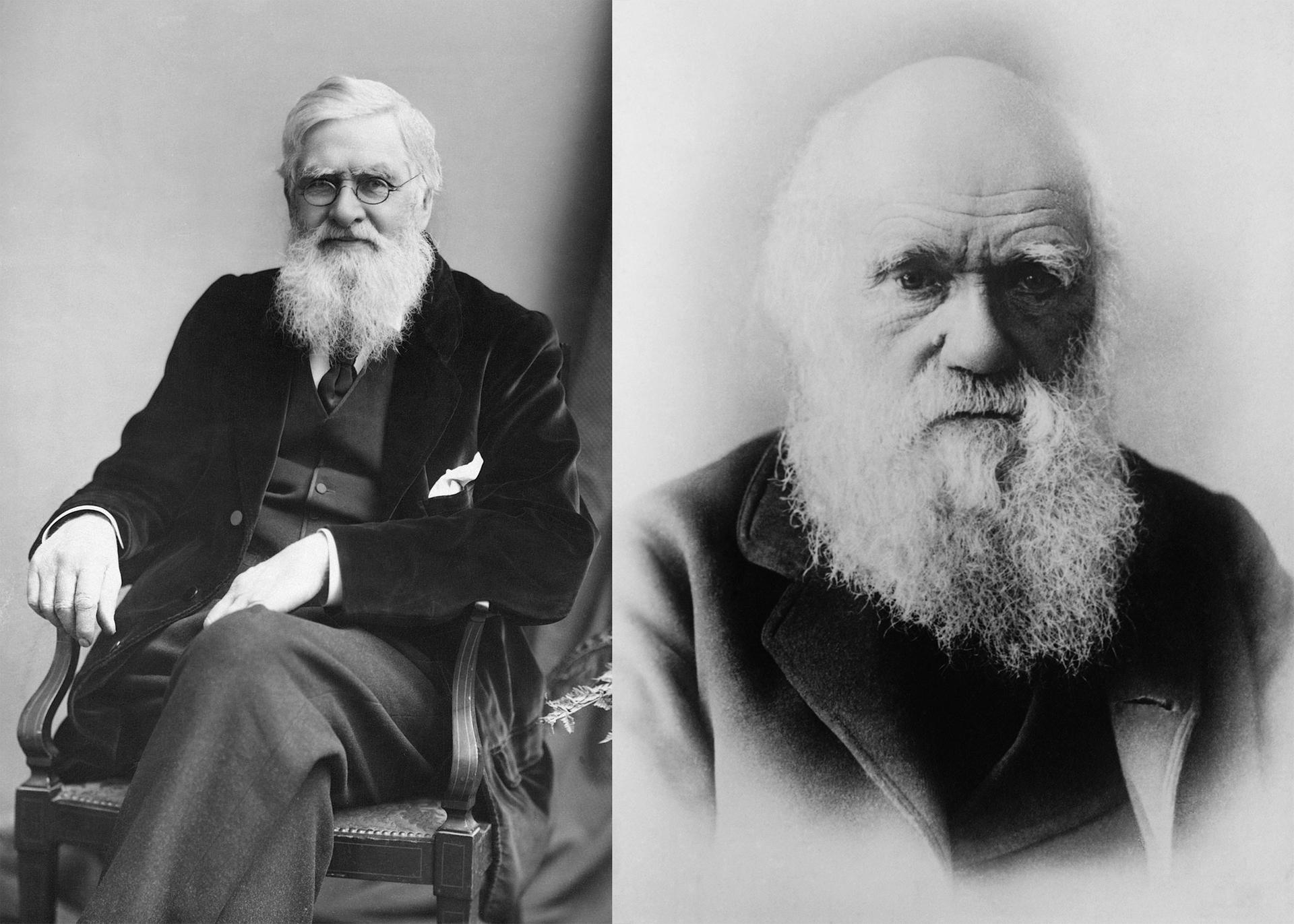
Alfred Russel Wallace (left) and Charles Darwin (right) (Wallace image courtesy of Wikimedia and Darwin image courtesy of Library of Congress, via Wikimedia)
In fact, there were theistic evolutionists in Darwin and Wallace’s day, so it’s not like “evolution” was a bad word. But here’s the key difference: The reason Darwin and Wallace gave for change – natural selection – is not to be confused with any ideas about progress or purpose. Instead, the evolutionary process is the development of life according to circumstances, both internal and external to the organism. As such, evolution is a matter of chance, not design.
Theistic evolutionists, like Darwin’s contemporary, William Thompson, were closer to those ancient thinkers who held that nature is goal-oriented than they were to the likes of Wallace and Darwin. The key distinction is mechanics. Whereas the theistic evolutionists believed God guides evolution, Darwin and Wallace argued natural selection is entirely mechanistic – the result of species variation.
Knighted by Queen Victoria in 1866, William Thompson became Lord Kelvin of Largs – the same Kelvin whose scale is used to measure thermodynamic temperature.
Given the prevailing views of Darwin’s time, it’s surprising that natural selection wasn’t simply squashed like a bug under the heel of theistic evolutionists who cleaved to the old notion that the process of biological change was guided by God.
Evolution Is Old News
In fact, the general concept of evolution had been around for centuries. The theory is part of various attempts to account for change. We can think, for example, about the change from acorn to oak tree, caterpillar to butterfly, or tadpole to frog. One of the earliest accounts of change comes from Aristotle, who argued that things have an internal principle of change, which directs each thing to its proper end.
Indeed, pervading most early thought in connection with change was the idea that nature is purposive, that there is some goal, if you will, for the thing to achieve. What’s clear here is that we’re talking about the fixed nature of life, which restricts change to individual living things – evolution over the course of a single life.
Even when life is considered in hierarchical terms – say from the lower life of plants to the highest life of the human being – change is still limited to strict classification. In other words, life is diverse. For example, some things swim, some fly, some perambulate, and some don’t move at all. But chimps don’t become human any more than hawks become sparrows, right?
Then again, what might change over large swaths of time? Does the diversity we see originate in a common source that has undergone changes of many millions of years?
Aristotle (384–322 BC) was the first taxonomer. He developed a classification system for living things, and scientists still use some of his groupings.
In his Zoological Philosophy, Jean-Baptiste Lamarck developed a theory that would influence Darwin’s thinking. Lamarck argued that, in response to environmental factors, organisms acquire characteristics over the course of a life. These characteristics are then passed on to their offspring.
Consider the giraffe. Suppose you come across two of these elegant creatures, one of which happens to have a longer neck than the other. Suppose further that, over time, all the leaves on the lowest branches in their territory have been eaten. The giraffe with the shorter neck is out of luck, unless it can make its neck longer, slowly but surely, by stretching to get to the leaves presently out of reach. On Lamarck's view, if the short-necked giraffe becomes a longer-necked giraffe, it can pass on its newly acquired trait.
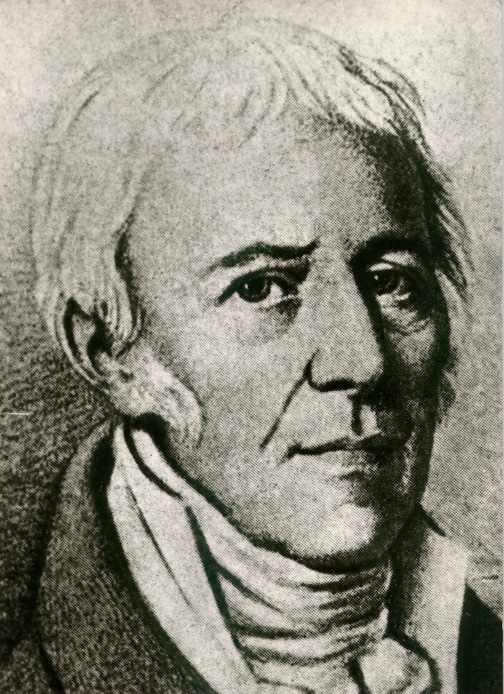
Jean-Baptiste Lamarck
(Credit: Wikimedia)
Sure, the longer neck is useful to the giraffe in question, but that doesn’t mean the giraffe’s offspring inherits the relevant characteristic – in this case the longer neck – any more than a ballet dancer’s offspring inherits the flexibility and strength it took the dancer years to develop. So, regardless of the poor giraffe’s fate, Lamarck’s theory didn’t survive. A major reason for the failure is that it focused heavily on adaptive changes an individual organism experiences over the course of its life.
Natural selection, on the other hand, is the mechanism or process of change that occurs at the genetic level. Genetic variation, not environmental adaptation, means that an organism’s characteristics are passed on (or not) to the next generation. Sure, those characteristics may (or may not) be advantageous to survival in the local environment. But the evolution of organisms is not about an individual organism’s life, but life itself. Yes, the individuals best suited to their environment win their battle of life, but life wins the war. The variety of living things, and the variety of species of living things is how life wins.
Advances in Earth Science Lead to a Breakthrough in Evolution
So, how did Darwin’s view come to dominate biology, despite the fact that natural selection is so at odds with the religious views about creation that dominated most people’s world view? For one thing, Darwin gathered an enormous amount of evidence over the course of his research. He was careful, cautious, and comprehensive. Moreover, perhaps like life itself, the timing was right for Darwin to develop his theory – and for it to resist challenges long enough to establish itself.
So similar were his and Darwin’s accounts of natural selection that, in a letter to Charles Lyell, Darwin declared, “I never saw a more striking coincidence. If Wallace had my M.S. sketch written out in 1842 he could not have made a better short abstract!”
Two scientific advances that gained traction in the 19th century were key to acceptance of the mechanistic view of natural selection: the gradual accumulation of both geological and paleontological records that imply the Earth is vastly older than had been previously believed, and the theory that populations are controlled, at least in part, by environmental factors.
Biblical accounts that God created the Earth about 4,000 years before Jesus arrived on the scene were generally accepted, even by such eminent British thinkers as Sir Isaac Newton. And leading figures like Lord Kelvin used the physics of their time to suggest both the Sun and Earth are too young to support natural selection. Indeed, “expert” estimates of Earth’s age shrank over time.
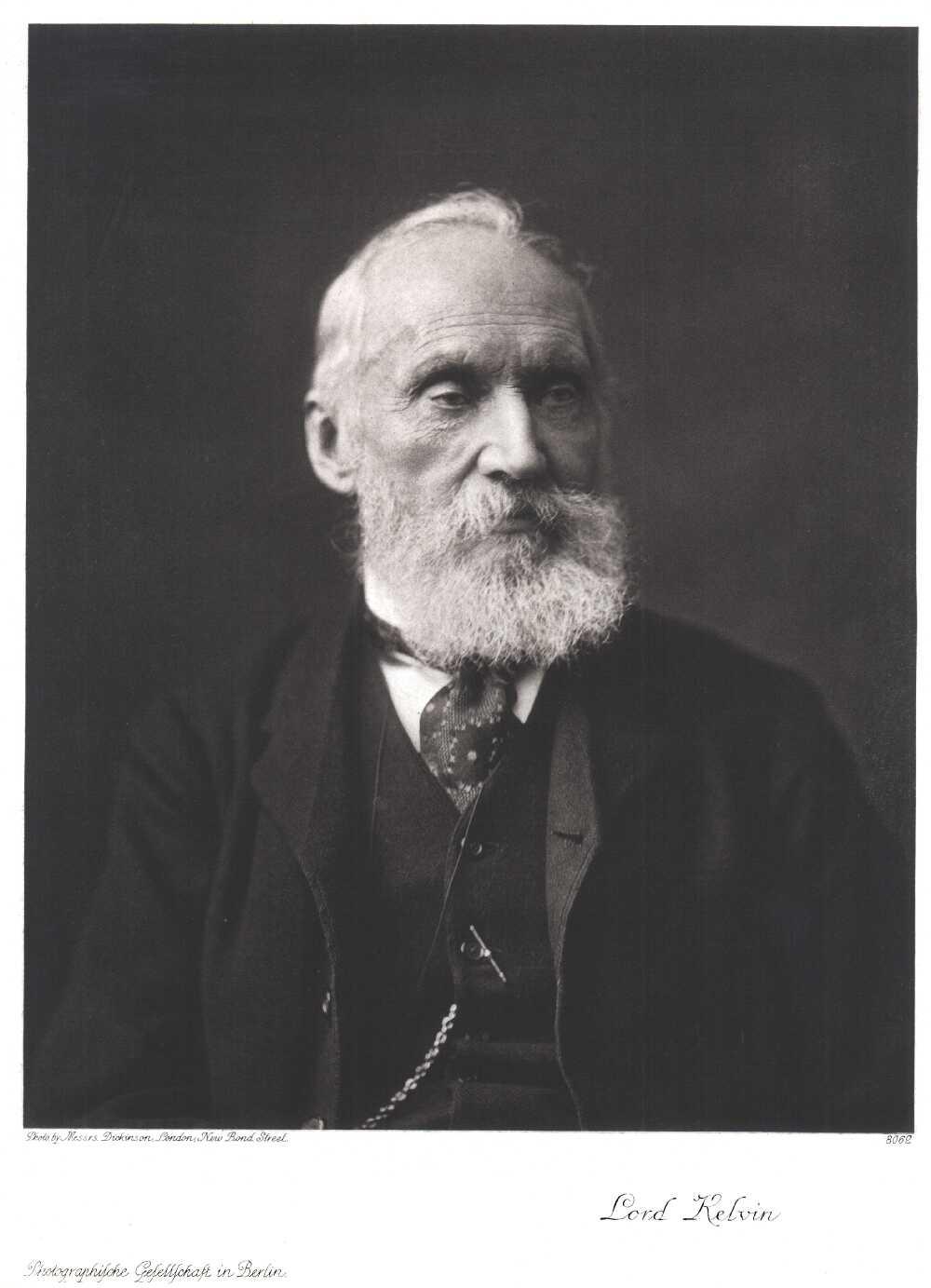
(Credit: Smothsonian Libraries, via Wikimedia)
However, in his 1830 work, Principles of Geology, Charles Lyell theorized that the Earth was much older than the traditional view, which supported Darwin’s theory. And, by 1895, physicists generally agreed it was around 20 to 40 million years old. (Of course, they were off just a smidge, and we now know that Earth formed about 4.5 billion years ago. Apparently, getting the right answers, like evolution itself, is a matter of time.)
Darwin was also influenced by Thomas Malthus, who theorized that when population outstrips resources, a struggle for survival ensues. That struggle leads to famine, disease, and war. Consequently, Malthus endorsed population control. Darwin, struck by the idea of unconstrained reproduction, altered his initial thinking that populations – humans or otherwise – naturally achieved equilibrium by not overproducing. Natural selection incorporated the view that species variants better equipped for prevailing environmental conditions would, over time, survive to become the dominant population.
Is it really Darwin vs. Wallace?
Alfred Russell Wallace’s theory about the origin of species developed over a decade of exploration. Starting in 1848, Wallace traveled both the Amazon and the Malay Archipelago collecting hundreds of thousands of specimens. It was during the Malay expedition that Wallace experienced his epiphany about natural selection.
So, why did Darwin, not Wallace, get all the fame from what would appear to have been a virtually simultaneous discovery? Darwin and Wallace had come to their conclusions independently of each other. Darwin developed his theory over 20 years, originating with a five-year sojourn (1831-1836) as a naturalist on the HMS Beagle. Wallace, also a naturalist and world traveler – and also working independently on an evolutionary theory – reached his particular insight about how and why organisms evolved after experiencing that fevered inspiration – a veritable eureka moment.
Some say that it was Wallace who inspired Darwin to publicize his work. Remember, the latter had labored all those years behind closed doors on his “theory of transmutation by natural selection.” It wasn’t until Wallace contacted him, and the two submitted the Linnaeus paper, that Darwin’s views went public.
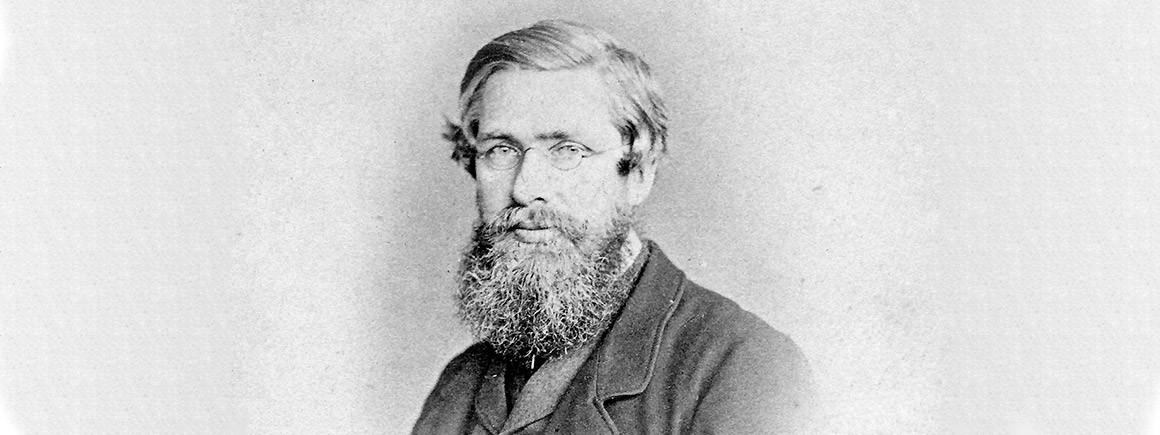
A young Alfred Russel Wallace
(Credit: George Beccaloni, via The Natural History Museum, London)
It’s worth considering that, given the radical nature of evolution – that “dangerous idea” – it’s understandable that Darwin was not in any great hurry to present his work for public scrutiny. After all, his 1839 book, The Voyage of the Beagle, had already gained wide notice. As an establishment figure, university-trained for the clergy, Darwin likely didn’t welcome the sort of controversy natural selection was bound to stir.
But after the Linnaeus society presentation, nothing happened. No controversy. Nothing at all. Darwin took the opportunity presented by the entirely underwhelming response to get On the Origin of Species published.
In his The Reluctant Mr. Darwin, science writer David Quammen tells us that Wallace was none of the things Darwin was. He wasn’t “of society,” didn’t have money or a university degree. In short, he had to make his own way. So, from the beginning, he wasn’t really set up to receive the crown of discovery. He did, however, gain professional acceptance, which to him must have counted for something. In 1889, he published Darwinism: An Exposition of the Theory of Natural Selection with Some of Its Applications. His status relative to his more celebrated colleague was perhaps sealed the following year when he was awarded the prestigious Darwin Medal by the Royal Society.
Title image courtesy of Tkgd2007, via Wikimedia Commons.
Ω
Mia Wood is a professor of philosophy at Pierce College in Woodland Hills, California, and an adjunct instructor at Bentley University and the University of Rhode Island. She is also a freelance writer interested in the intersection of philosophy and everything else. She lives in Little Compton, Rhode Island.
